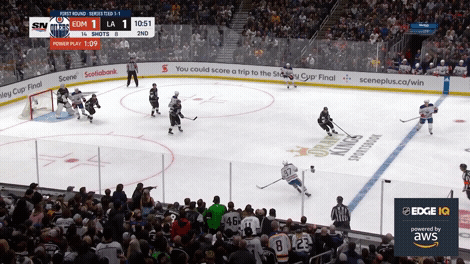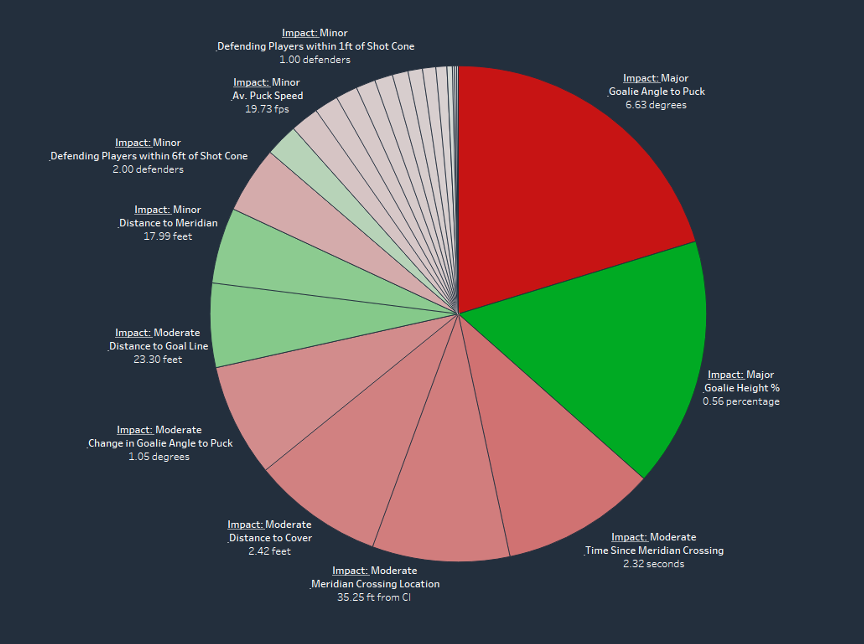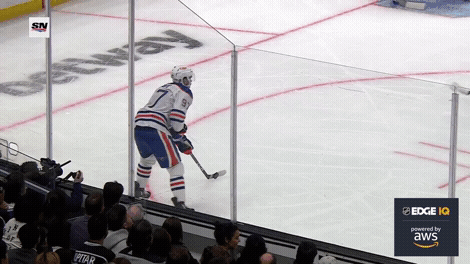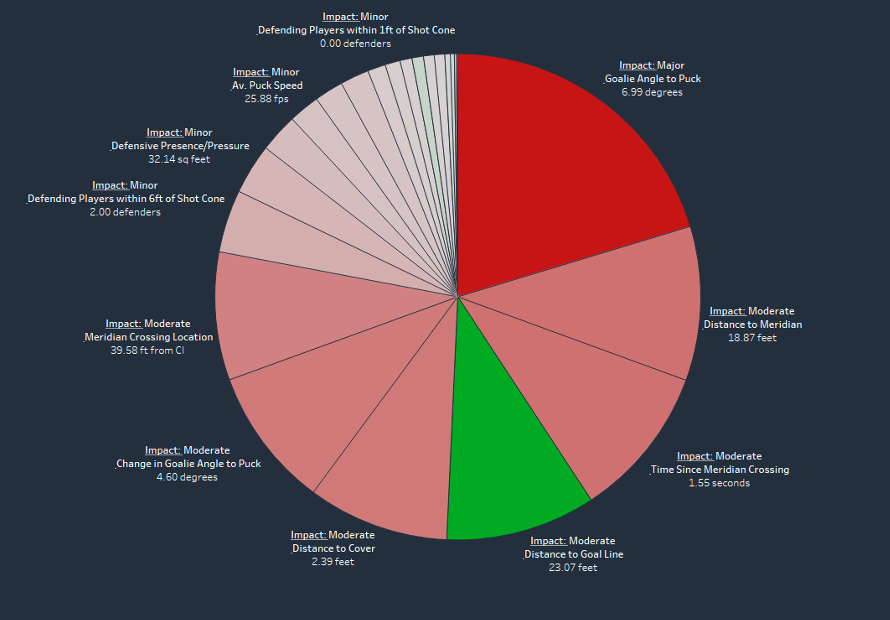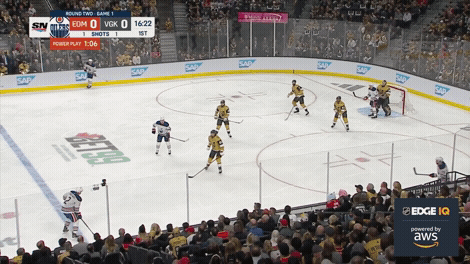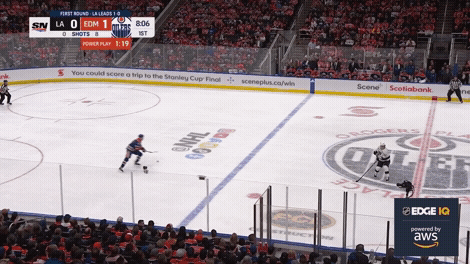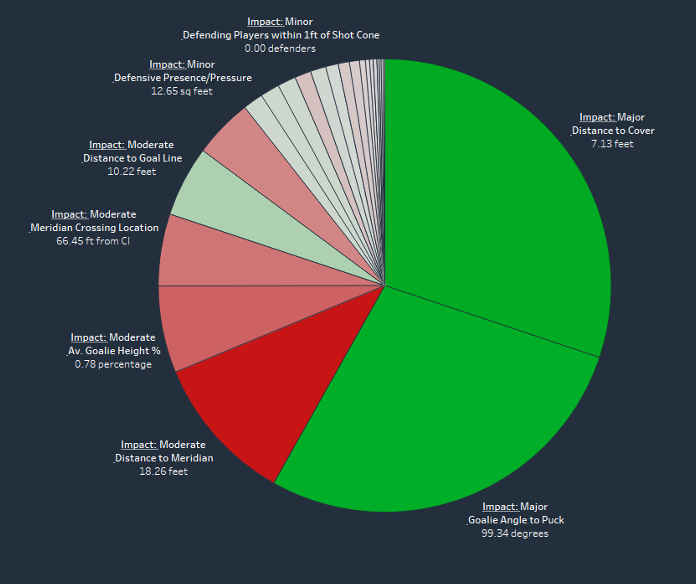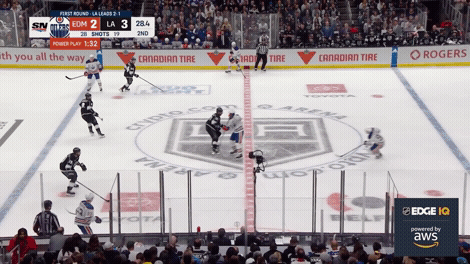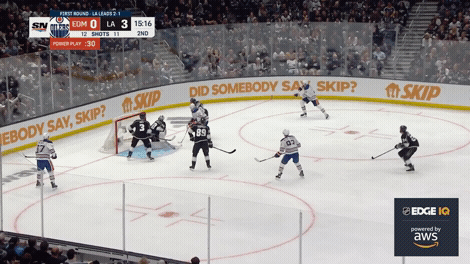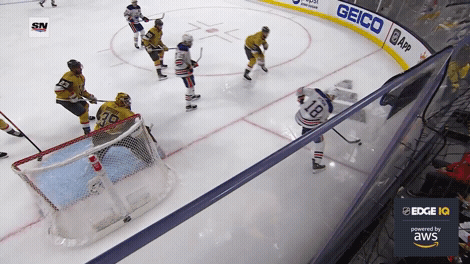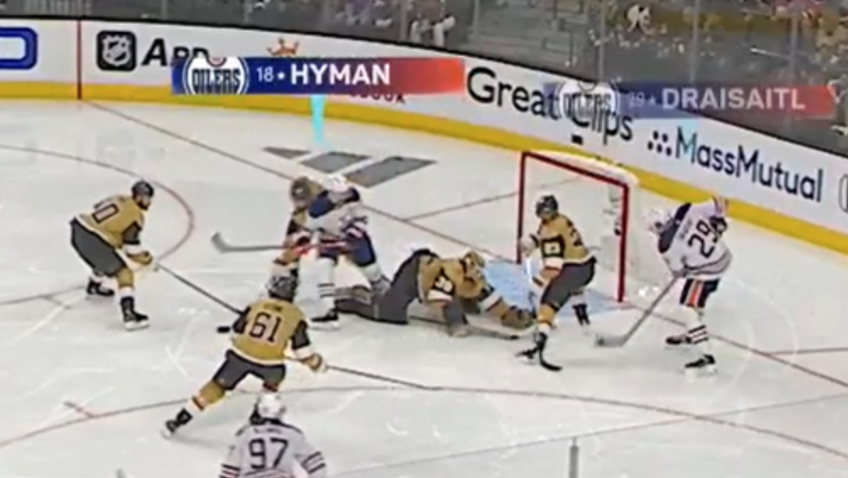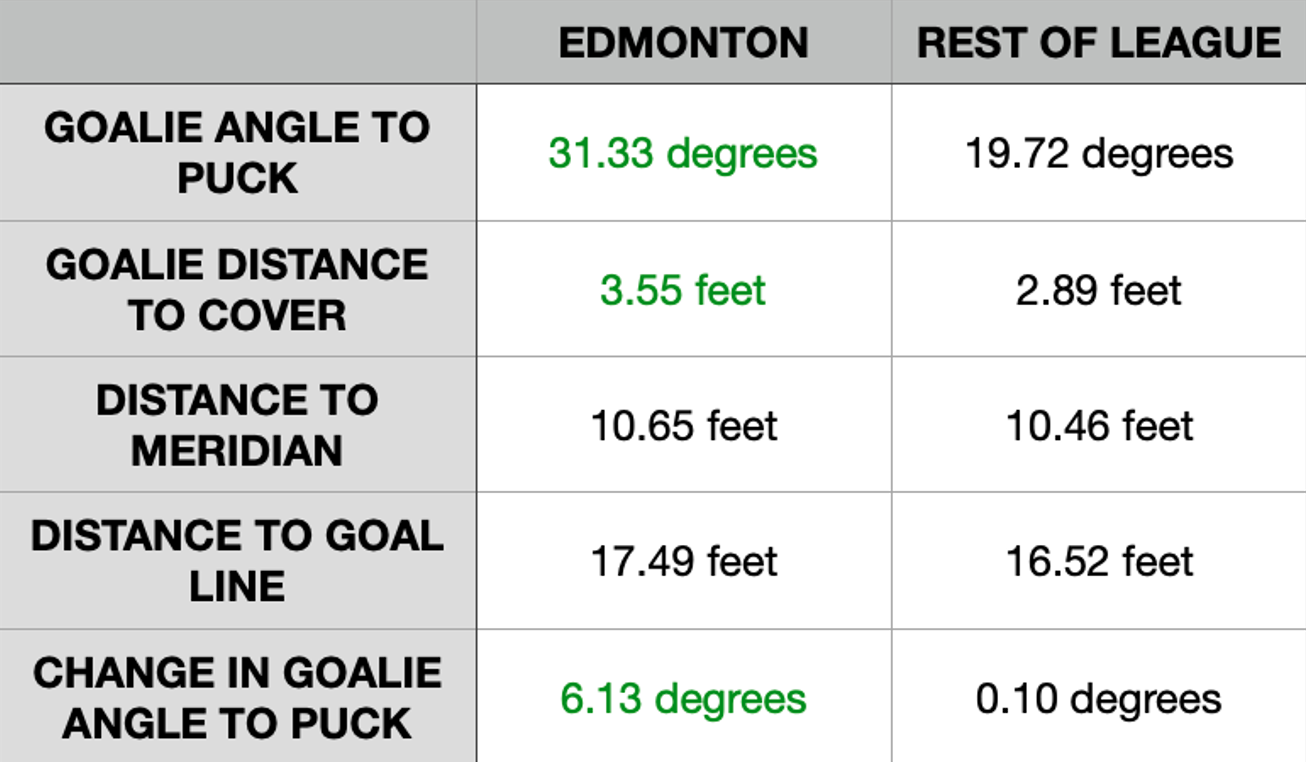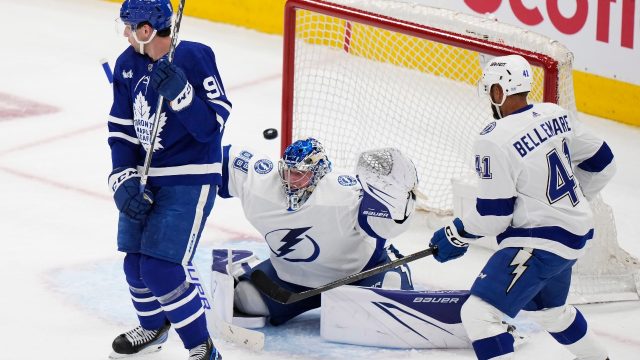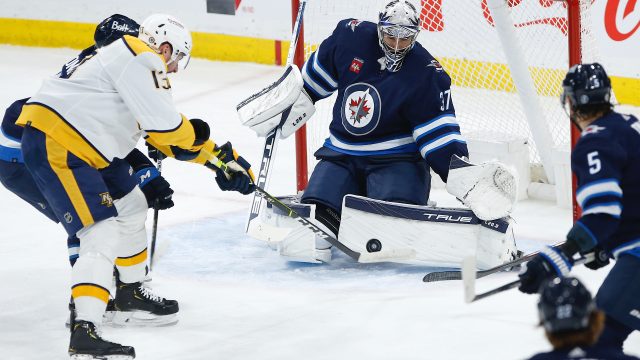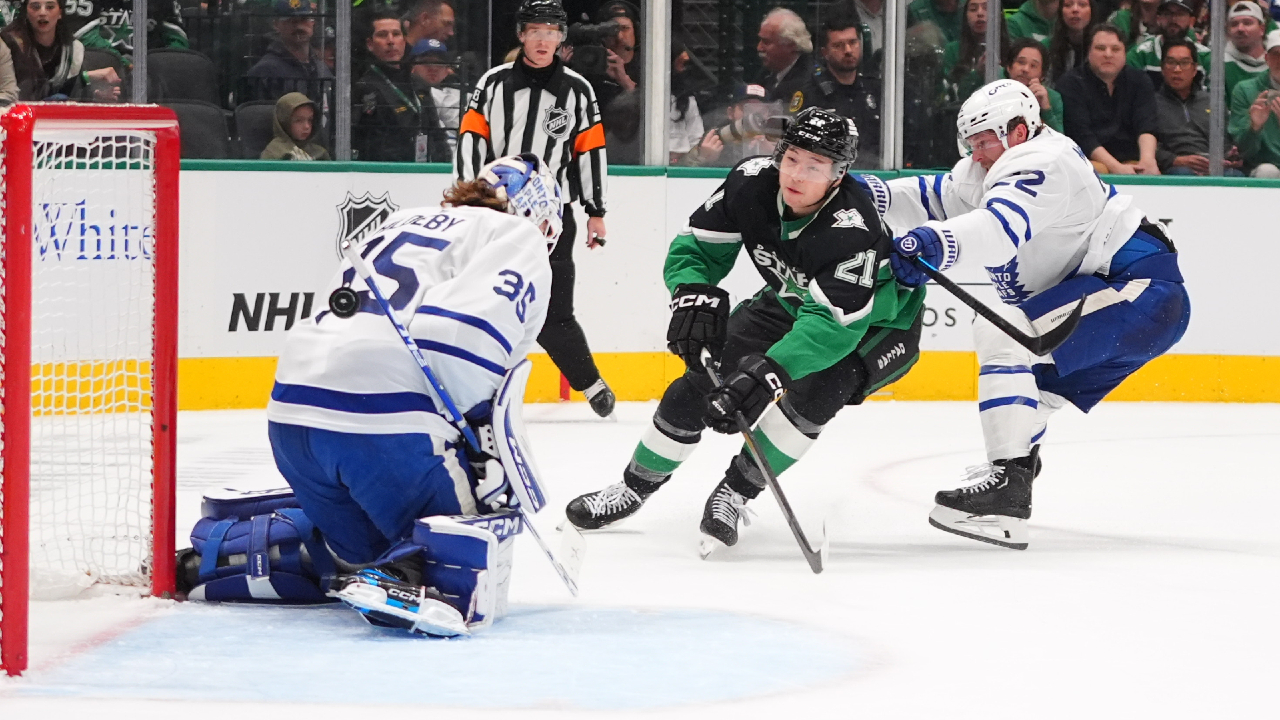
On a Saturday night in May, in the second round of the Stanley Cup Playoffs, the Edmonton Oilers went 3-for-6 on the man-advantage, and their post-season power play percentage went … down. After Game 3, it’s plummeted to a scant 51.9 per cent, barely scoring on more than half of their power plays so far through nine games.
They must be ashamed.
Jokes aside though, what they’ve done this season on the power play has been astounding. In the regular season Edmonton put together the best power play percentage in NHL history, clicking along at 32.4 per cent. With opponents scouting their structure and set-up, it’s wild they’ve somehow gotten better since.
What they haven’t done, is reinvent the wheel. Jay Woodcroft has not masterminded some original formation the league has never seen before, but he does deserve credit for allowing his elite talent the freedom to improvise within a similar structure to most other power plays around the league.
For the Oilers, the puzzle pieces just fit perfectly to reveal a high-quality chance creation machine. Opportunity Analysis uses NHL EDGE IQ data (powered by AWS) to show all the power play shots in these playoffs that meet the threshold of a “high quality chance” – which would be those with a Projected Goal Rate of over 15 per cent. The Oilers are handily the post-season leader in this category.
Below we’ll look at a few of those chances individually, as well as the big picture numbers, focusing on the NHL/AWS data that highlights how what the Oilers do isn’t about creating volume, but about creating looks where the goalie doesn’t have a chance.
THE FIVE PIECES OF THE EDMONTON POWER PLAY
If you took only Connor McDavid’s power play points from this season he’d have finished ahead of the all-strengths point totals from the likes of Mark Scheifele, Jack Eichel, and Brad Marchand. McDavid tallied a league-high 71 power play points, partially because he’s managed to make his dynamic skating an offensive weapon in a game state where most players are fairly stagnant. Yes, he uses his skating for zone entries, but the most impressive thing McDavid does comes in the offensive zone, where he uses his feet to get up high so that all of his flank touches come when he’s moving downhill towards the net.
That means if the PK wants to leave McDavid alone while he has the puck from distance, every second of that choice means he’s getting into a better shooting area. Eventually, the dangers get too high and the defence has to honour his shot, or else he can do this:
This is akin to “establishing the run” in football, where if you pound the ball three or four yards at a time into a defence, eventually things will open up downfield.
As the AWS pie chart shows below, there’s not a ton (in terms of puck movement, screens, etc.) that classifies this as an unbelievable chance aside from the shot coming from a dangerous area on the rink.
On these charts, the most impactful factors on the attempt work around like a clock, so here a dead square goalie would lower the likelihood of this chance becoming a goal. But the goalie’s height – he’s curiously low – and the distance from both the net and the middle of the ice are green, as they have positive impacts on the chance becoming a goal:
The result is that McDavid’s elite shot turns an attempt on a square keeper into a goal. And that came mere moments after he had done this, on a chance that graded out as even lower quality:
As you can see, this pie chart is a pretty cherry-hue, which isn’t typical of the Oilers chances.
When the chart is that red, you want the goalie to make the save. The only green slice comes from the fact the shot is taken from just above the dots, distance-wise.
That’s what I mean by establishing the run – McDavid can shoot, so you have to honour it. Because of that, and since he’ll just keep skating and get closer to the net until confronted, he’s developed what I call a “gravity.” PK guys get pulled to him; they have no choice.
This creates seams.
And with seams, suddenly things start to open up.
Just three games into the second round of the playoffs, Draisaitl has 12 goals, seven behind the all-time record for a single playoff run. Six of those goals have come on the power play, partially thanks to McDavid, but largely due to the fact that Draisaitl’s such a multi-tooled player who benefits from not being the only threat on his power play unit.
Here, the AWS data really starts to show the type of chances the Oilers are creating, and how McDavid’s skating that I mentioned above is helping them do it.
Watch him circle the zone here. When you’re killing penalties you’ve always got 1.25 jobs comprised of one major responsibility, and with your eye on what your responsibility will become if the puck or player goes somewhere else. Here, McDavid makes every PK guy think he’s their major responsibility for at least a second.
And nobody knows how to find soft spots better than Draisaitl while McDavid does his hypnotist act and lulls the defence to sleep.
By the time the puck gets to Draisaitl, who can smash home open looks with his giant paddle of a blade, here’s how the scoring chance graded out:
Goalie Angle and Goalie Distance To Travel are massive factors, and this is much more typical of what the Oilers do to penalty kills. Goalies simply have no chance.
Here it is again against the Kings, who cannot figure out ol’ No. 97 for the life of them, while Draisaitl feasts on their frazzled PK:
How about that zone entry, followed by McDavid moving downhill with speed? It opens everything up. Here’s the very comparable pie chart on that goal, in which again you can see that Edmonton’s power play makes life hard on goalies.
It doesn’t help goalies that it’s not just confined to one area of the ice. If McDavid flips to the other flank, Draisaitl can slide into the bumper, where he can finish with ease. Ryan Nugent-Hopkins finished third in the NHL in power play assists this season (behind only McDavid and Nikita Kucherov) because he knows how to distribute to all these weapons around him:
What’s crazy still, is that neither of the above guys lead their team in playoff power play points. They’re behind…
Bouchard can hit it, end of story. Having a hammer at the top keeps penalty killers from cheating out to the McDavid and Draisaitl flanks.
In terms of handedness and physical talents, McDavid, Draisaitl and Bouchard fit together perfectly in terms of chance creation. But the Oilers have great complementary pieces to allow those guys to thrive, too.
Every power play needs a dash of blue collar effort, and that’s Hyman in a nutshell. He screens goalies, annoys them in the paint, collects rebounds, and wins back loose pucks. Here’s a PP goal where you can see him influence the goalie’s movements:
If you looked at every goal where Draisaitl has a “free goal” at the net front, you’ll usually see Hyman paying the price, wearing a defender like a backpack:
And finally, the guy who was third in the NHL in power play points this season…
Ryan Nugent-Hopkins
The Nuge was a sneaky power play force this season, finishing with 53 points on the man advantage. His 38 power play assists were 10 more than big names who get a lot of touches on good power plays, like Artemi Panarin and Mitch Marner.
He plays a more Sedin-like role, in that often he’s the pressure relief valve, as pucks will go into him, then right back out to Edmonton’s most dangerous shooters.
Altogether I think Edmonton’s power play is best understood when you look at what they have done consistently versus the rest of the teams in the post-season.
Here’s what they’ve done particularly well compared to the other 15 teams, which are shown in the right column. The Oilers have simply put goaltenders in far worse positions than most teams are able to, which proves out here. Their attempts aren’t closer to the net or the middle of the ice, but they’ve left goaltenders contorted like Cirque du Soleil dancers:
Edmonton may be down in their series, but if Vegas can’t figure out how to pour cold water on this hot fire, it’s tough to see them extinguishing the Oilers in Round 2. That power play just runs too hot.


